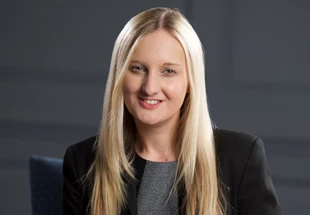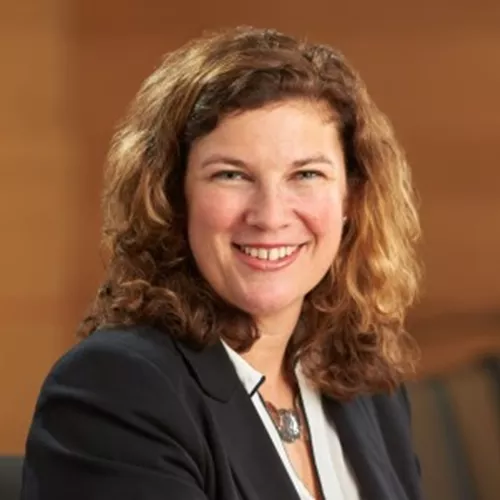
Schedule 1 Property Structures
Published: 06/07/2022 07:07

The main focus in cases under Schedule 1 to the Children Act 1989 is often on how to meet the housing needs of a child; understandably so, as it is usually the largest cost. It can also be the starting point for settlement as the type of property and location can affect other payments, such as furnishings. However, the focus in negotiations is commonly on the ‘how much’ and ‘where’ aspects of the housing provision, rather than on the practicalities of how the property will be owned.
In this article, we review the ownership structures that can be used in Schedule 1 cases and the associated benefits and practice points for each. In doing so, it is important to acknowledge at the outset that a Schedule 1 order sets up a structure for a family’s home, often for many years. If care is not taken over the arrangements, the consequences can be very significant: from ongoing disputes, to unexpected tax consequences, to the practicality of who pays for a new boiler when it breaks in the middle of winter. We have the benefit of working together on such cases to advise clients on tax implications and documenting property structures, as well as what happens if either party dies or has financial issues. Our focus is, therefore, on the practicalities that should be explored at the outset of negotiations in Schedule 1 cases so that the structure actually works in reality.
Preface: the legal framework
The power for a court to order property provision is set out in paragraphs 1(2)(d) and (e) of Schedule 1 to the Children Act 1989. These provisions allow an order that a parent either settles a property for the benefit of the child or transfers a property to the applicant or, at least in theory, the child, for that child’s benefit. As clarified in UD v DN [2021] EWCA Civ 1947, Schedule 1 provision lasts while a child is under the age of 18 or in education or training, save in ‘special’ or ‘exceptional’ circumstances. Accordingly, the property usually reverts to the paying parent when the child attains their majority or completes their education.
It is important to remember that only one settlement or transfer of property order can be made by the court against the same person in respect of the same child (paragraph 1(5)(b)), although there can be ‘rollover’ provisions.
The wording of these paragraphs, particularly the use of the word ‘settlement’, may explain why Schedule 1 has become synonymous with trusts; many reported cases involve property held in formal trust arrangements. That may also reflect the wealth of the paying parent, where the property value, tax position or other financial arrangements make a trust a suitable structure. However, in many other cases, a trust may not be appropriate for the family, particularly where the establishment and running costs are disproportionate to the property value or general financial position.
Working example
For ease when discussing different structures, we use an example of an unmarried mother and father of two young children, aged 6 and 2. The father is the financially stronger party, though not of high wealth. His income is approximately £100,000 per annum, so under the Child Maintenance Service (CMS) threshold. However, from a combination of savings and inheritance, he owns a mortgage-free house and has sufficient liquid capital to purchase a property for the mother and children, albeit at a lower standard than his main home. The mother works part time and has a small amount in savings but no other assets.
The parents have recently separated but remain living in the father’s house at present. They have agreed that a new property will be purchased for the mother and the children near to the father’s property and the eldest child’s school, which they can live in until 6 months after the youngest child finishes tertiary education (c. 20 years).
What are their options for the ownership of that property?
Traditional trust
We start where many reported cases do – the trust structure. The father in our scenario would settle funds into a trust for the purchase of the new property. The property would be owned by the trust with trustees managing it for the benefit of the children during their minority, with the mother having a right to live there. At the end of the term, the property would revert to the father (though there is nothing preventing the children from being the ultimate beneficiaries if the father so chose).
Benefits
The key benefit, and the reason why trusts are commonly used in high net worth cases, is that a trust formally secures the property for the child’s benefit. It has detailed provisions about what happens during the lifetime of the trust, but without the property remaining in the father’s name or control. For the mother, it also provides some security that the property will be managed by trustees and that it will be protected if the father becomes bankrupt, his circumstances change or he dies.
Points to consider
Trust structures can be very detailed, and specialist private client advice is essential. There are a few points, in particular, to consider early in negotiations if a trust is an option:
- Tax/costs: this is always a key consideration but is particularly so in relation to the establishment of a trust. There is an inheritance tax regime that applies to trusts known as the ‘relevant property’ regime. This could mean ongoing tax charges every 10 years and on capital distributions (including termination) of the trust. Capital gains tax (CGT) is also pertinent – the settlor of the trust in Schedule 1 cases will rarely be in occupation of the property, so when it comes to be sold, there may be significant gains without principal private residence relief. Trusts pay both Stamp Duty Land Tax (SDLT) and CGT higher rates, which could mean significant tax consequences. As well as the costs of establishing a trust, there are also reporting obligations to HM Revenue & Customs, which may require professional advisers and further cost.
- Selection of trustees: some cases may justify the appointment of independent professional trustees, but this comes at a significant cost and is not proportionate for many families. Would it be appropriate for the mother and the father to be trustees, or for them each to appoint a friend or family member to fulfil that role?
- Class of beneficiaries: should this include the mother? If it is an existing trust, is there an ability to extend the beneficiaries to other family members or future children of the father and, if so, could that impact upon the ability of the mother and children to remain in the property?
- Occupation: if the mother is not a beneficiary of the trust, careful consideration needs to be given to her right to live at the property. This is particularly important if the mother is going to be a trustee as granting her the ability to live at the trust property could cause issues such as with conflicts for her co-trustees or personal interest transactions. Consider whether the mother’s occupation can be regulated by the trust deed or whether a tenancy/lease is needed (and, if so, ensure that the appropriate structure is chosen, including considering the impact of the mother paying a peppercorn rent if this is the case). Also consider which other people are able to occupy the property: What happens if the mother cohabits/marries during the lifetime of the trust?
- Contributions: in some cases, particularly if the father in our scenario had less liquid capital, the mother may contribute to increase the housing fund, whether with her own funds or by raising a mortgage. Alternatively, the mother may wish to fund a renovation of the property during the time that she lives there. Having a trust in place makes it more difficult for this to happen, given the ownership and trustee structure.
Property owned in the father’s name
This option would, in our scenario, mean that the father would purchase the property with a right of occupation granted to the mother and the children.
Benefits
This is a common structure where a trust is not appropriate as it allows the purchase of a property by the father which he can retain/sell at the end of the term, but with a secure right of occupation for the mother and the children prior to that. The option is most appropriate where the mother is not investing in the property or where there are wider consequences of the mother owning it, including if she has other assets so would then have additional tax liabilities. The property may then be seen as more of a long-term investment for the father as his ownership would mean that he benefits entirely from any increase in value.
Points to consider
- Occupation: as with a trust, consideration needs to be given to how the mother will be given the right to occupy the property. It is important to seek advice on this early in negotiations as it could cause significant problems for the parties when they come to purchase a specific property or in relation to the mother’s long-term occupation. For example, a licence to occupy would not be appropriate in many Schedule 1 situations because they are designed to be temporary arrangements. This means that they do not grant a right of exclusive occupation (i.e. for the mother to the exclusion of the father/owner), they are capable of being terminated on very short notice, and usually contain very restrictive obligations on the occupier in relation to alterations/decoration.
- Tax: as the mother in our scenario would not have any interest in the property, the tax consequences of this structure fall on the father. SDLT would be incurred initially on the purchase cost. It would be likely that he would have to pay CGT when the property is sold as it will not have been his main residence, and this could be fairly significant if the children are young (as for our family). It is therefore vital that tax advice is sought for the father and that he is aware of this from the outset.
- Payments and responsibilities: for the mother, the responsibility for the costs of the property may be clearer and less worrying in this structure as her position would be akin to a tenant. This would usually allow her to decorate the property, but with the father responsible for structural and repair costs. There can also be specific provisions regarding payment of ground rent and service charge if it is a leasehold property.
- Investment: if it is intended that the mother will make a financial investment into the property herself, whether at the outset or in the future, a declaration of trust may be required. Whilst this is easier in this structure than with a trust, this could require further negotiations and documentation in the future, so the mother in our scenario may prefer to build up a separate investment to provide for her accommodation once the ownership structure comes to an end.
- Bankruptcy: this ownership structure also has significant risk from any change in the father’s financial circumstances. If the father was made bankrupt, any property owned by him would vest in the bankruptcy estate, and the trustee in bankruptcy would decide whether or not to sell the property with a sitting tenant (i.e. the mother). This could be unlikely if the mother pays little or no rent, as is likely in Schedule 1 cases. Otherwise, the trustee may disclaim the lease, serve notice on the mother and sell the property with vacant possession, leaving the mother and children seeking alternative accommodation. This is therefore a significant risk that should be considered depending upon the father’s financial circumstances and source of income.
- Death of the father: this could present some difficulties as the property would be in the estate of the father. There may be potential recourse for the mother or the child under the Inheritance (Provision for Family and Dependants) Act 1975, but if the father is non-domiciled there may be little, if any, protection.
- Cohabitation/marriage: a new relationship is always a tricky subject following a separation, particularly where there are children. This is escalated where a mother (in our example) cohabits or marries a new partner while living in a property owned by the father. This scenario should be specifically addressed so that everyone is aware of the position in advance. Our experience is that many agreements allow a new partner to move into the property, but with some conditions. Commonly, the mother is required to pay a percentage of the property’s market rent to the father, representing the occupation by her partner. The mother can also be required to arrange for her partner to sign a declaration of no interest to ensure that they do not obtain a beneficial interest in the property and to regulate their occupation. Similarly, terms can include what happens to the property if the mother and the children cease to live there as their main home (such as if they move in with the mother’s new partner).
- Will the mother ever feel that this property is her home? It is understandable that some people may not want to live in a property owned by their ex-partner, with any changes or future move requiring their consent. It is important not to forget the emotional consequences for parents in the negotiations, particularly if there have been control or domestic abuse issues during the relationship.
Property owned in the mother’s name
As Schedule 1 orders provide a home for children with one parent while the other parent is not directly involved with the property, the most appropriate option may be for the parent who will be living at the property to own it. This can be done alongside a loan/charge to protect the interest of the other parent who contributes to the purchase.
Benefits
The main benefit of this structure is the clarity that it brings in ownership and responsibility for the property. In our scenario, the mother would own the property and may feel that it is more her home than she would if it was owned by someone else. It also gives the parents more flexibility going forward, particularly if the mother wishes to invest into the property, or even to retain it entirely if she is able to buy-out the father’s contribution at any stage.
Points to consider
- Tax: if the mother does not own another property, as in our scenario, there might be less SDLT paid on the purchase (if she was a first-time buyer) than if the father purchased the property. In addition, if the mother lives at the property as her main home and does not purchase another property, there will be no CGT for her to pay on sale. Any CGT payable by the father will be dependent upon how his contribution is structured, such as whether it is expressed as a fixed amount or a percentage share, and whether it has provision for interest or a return on his investment.
- Investment structure: if the father in our scenario wishes to have a return on the amount that he contributes, his contribution may be recorded as a beneficial interest in the property under a declaration of trust. Alternatively, either parent may prefer for it to be arranged as a loan secured by way of a legal charge, with a fixed rate of interest, rather than the father having a beneficial interest in the property. Where a property is being acquired with a mortgage, the availability of the latter structure will depend on the willingness of the mortgage lender to consent to a second charge being secured against the property. Thought should also be given to the likelihood of a future lender consenting to the arrangement if/when the property is re-mortgaged.
- Rollover: given that Schedule 1 property structures are often in place for many years, it is not uncommon for a house move to occur during the term, particularly if the children are very young and a move is necessary for school catchment areas. This is far easier on a practical level if the property is owned in the mother’s name. It allows her to choose a suitable property (perhaps subject to the father’s consent, not to be unreasonably withheld, to ensure that his contribution is secure) and to make arrangements for the sale/purchase, with the father’s interest or loan then transferred to the new property.
- Property repairs: if the person who owns the property has limited assets, as in our scenario, this structure may create greater concerns about responsibility for costs. This could be regular expenses, such as buildings insurance and service charges, or larger one-off repair costs. The mother here has limited assets and her child maintenance will be set by the CMS formula, so she may struggle to meet such expenses. Consideration should therefore be given to how these could be funded, such as a lump sum from the father to allow for re-decoration or a property expenses fund for unexpected costs.
- Future consequences: it is important to be aware of potential wider consequences for one parent of owning a property, particularly if the other parent has contributed the majority of the funds. This could require advice on the impact of a property purchase on benefits payments. At the other end of the scale, if the mother has other assets now or in the future, she may have additional tax liabilities by virtue of owning this property. Lastly, consideration is needed of what would happen to the property if the mother were to die during the lifetime of the trust, taking into account the father’s contribution and who would inherit the property.
Joint ownership
If the parents purchase or retain a property in joint names, similar considerations would apply as those if the property is owned solely by the father. While the mother’s position would be clearer given her joint ownership of the property, detailed provisions would still be needed to clarify the beneficial interests (and, therefore, the tax position of the father), the occupation and the responsibilities for costs and maintenance.
Property advice
Once an agreement is finalised and the family lawyers step away, it is important that the parents have continuing advice while a property is chosen and the structure implemented. This allows the input of a property lawyer in relation to matters such as whether the proposed property is freehold or leasehold and the options for documenting the arrangement as the purchase progresses. It is particularly important to ensure that any property document accurately reflects the terms of the Schedule 1 order, particularly relating to the term of the occupation and responsibility for costs.
Particular care needs to be taken where the proposed property is a leasehold property and the parent occupying will be doing so pursuant to a sub-lease. The headlease may be subject to restrictions on sub-letting, and freeholders (or superior landlords) may require direct covenants from a sub-tenant (the mother in our example). This could expose her to liability for unpaid service charges/insurance contributions, or other sums due under the headlease, if not paid by the owner of the property.
Conclusion
As the above points demonstrate, there are many options and a degree of flexibility in how Schedule 1 properties can be purchased for the benefit of a child. The key is giving full consideration to the family, private client, tax and property consequences of the proposed structure before an agreement is finalised to prevent unintended consequences arising in the future. Dealing with this in advance will ensure that the structure works for the whole family from the outset, with enough flexibility for any changes that life brings for them.










